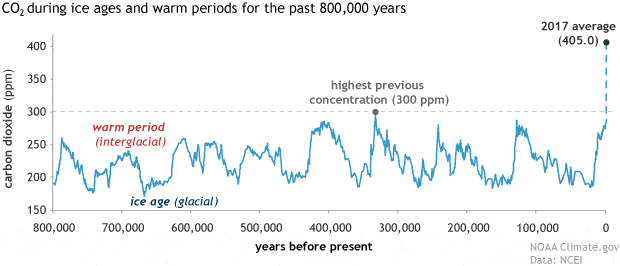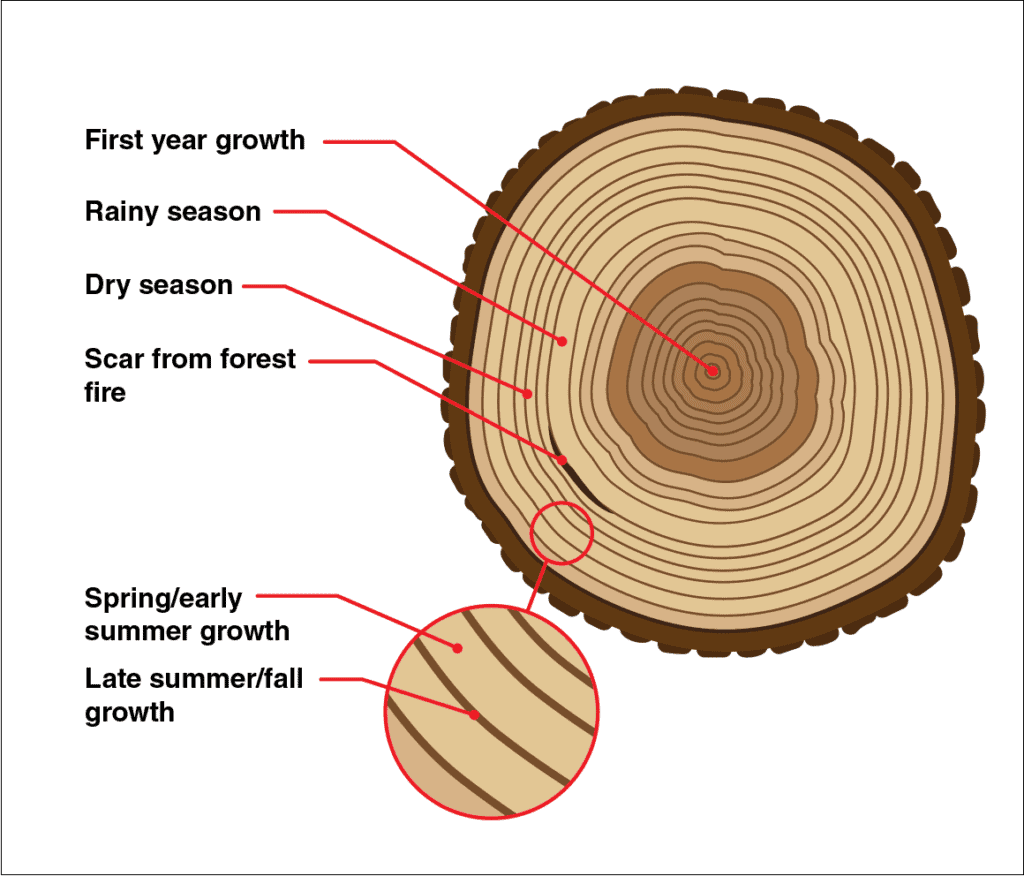Greenhouse gas emissions produced by human activity were influencing the global climate since the early 20th century, a study reports. The study, carried out by NASA researchers, provides one of the earliest evidence of global man-made climate change.
Tree ring records can be used to reconstruct temperature and precipitation seasonal variations. Researchers can also use this proxy, along with other historical rain and temperature assessments, to look for evidence of a “fingerprint” of human activity.
Researchers also used adrought indicator called the Palmer Drought Severity Index, or PDSI. The PDSI averages soil moisture over the summer months using data such as precipitation, air temperature, and runoff. The likelihood of drought is strongly increased by rising temperatures — and this too can be observed in tree rings.
NASA has been measuring PDSI using space-based measurements, but this satellite data is only available since the 1980s. Meanwhile, tree rings (whose thickness is a strong indicator for wet and dry seasons) can offer data that goes back centuries.
“These records go back centuries,” said lead author Kate Marvel, an associate research scientist at GISS and Columbia University. “We have a comprehensive picture of global drought conditions that stretch back way into history, and they are amazingly high quality.”
“If you look at the fingerprint, you can say, ‘Is it getting dry in the areas it should be getting drier? Is it getting wetter in the areas it should be getting wetter?'” she said. “It’s climate detective work, like an actual fingerprint at a crime scene is a unique pattern.”
Researchers found that within the first half of the 20th century, the data started aligning — in other words, the effects of mankind’s activity started to be visible over a hundred years ago.
“We were pretty surprised that you can see this human fingerprint, this human climate change signal, emerge in the first half of the 20th century,” said Ben Cook, climate scientist at GISS and Columbia University’s Lamont-Doherty Earth Observatory in New York City. Cook co-led the study with Marvel.
The trends showed a non-intuitive trend in the 1950-1975 period, when aerosol pollution actually caused a small dip in the effect of greenhouse gases. Before the passage of air quality legislation, industries expelled vast quantities of smoke, soot, sulfur dioxide and other particles which blocked sunlight and counteracted greenhouse gases’ warming effects. As pollution began to decline after 1975, global patterns fell back in line with the human fingerprint.
As climate change deniers like to say, the climate has changed in the past due to natural causes, but the evidence that we are causing most of the changes we see nowadays are overwhelming. There is a clear connection between our industrial activities that generate greenhouse gas emissions and the unnatural climate change. Whether we, as a society, care to admit it or not is a different story.
The study was published in Nature.








